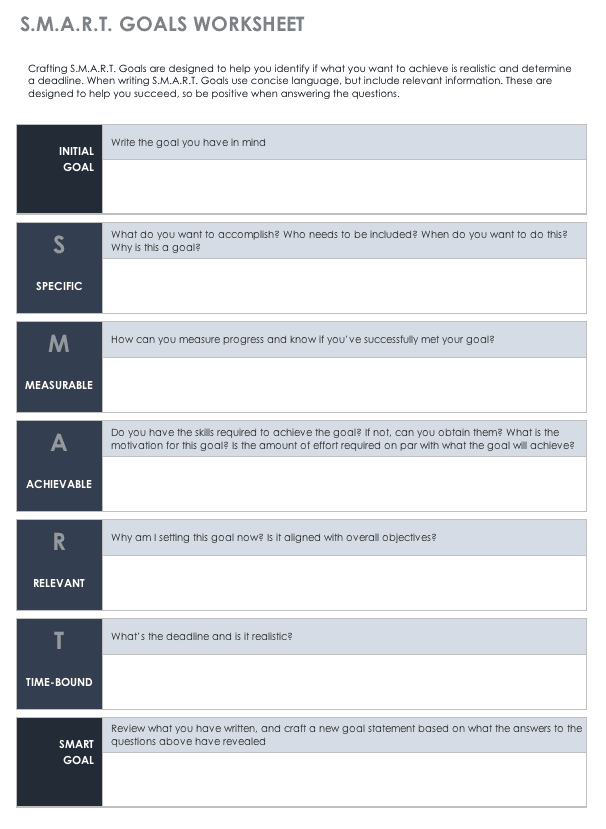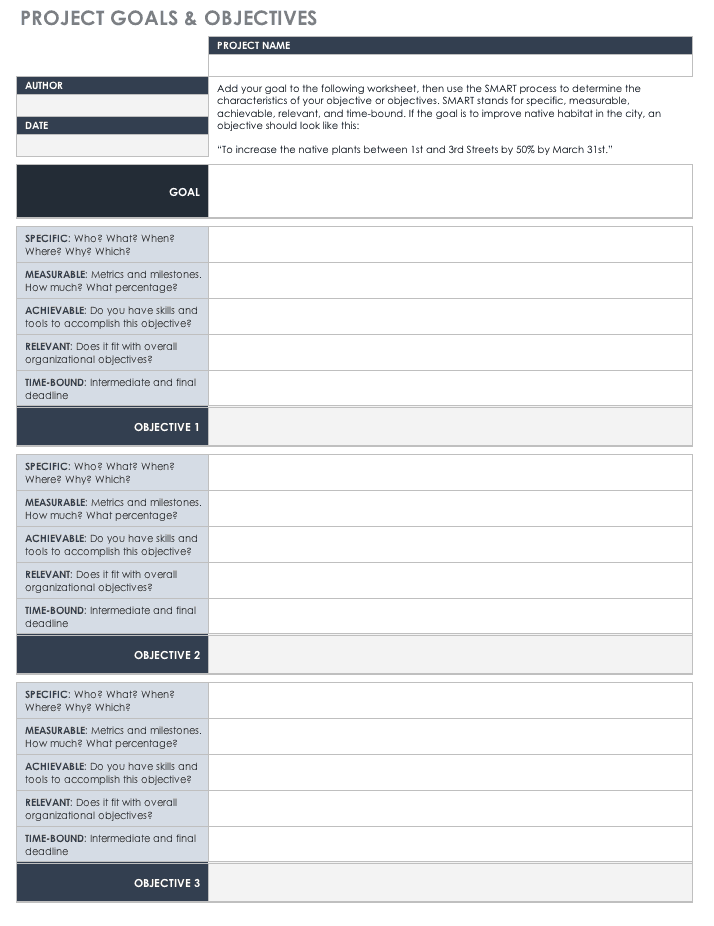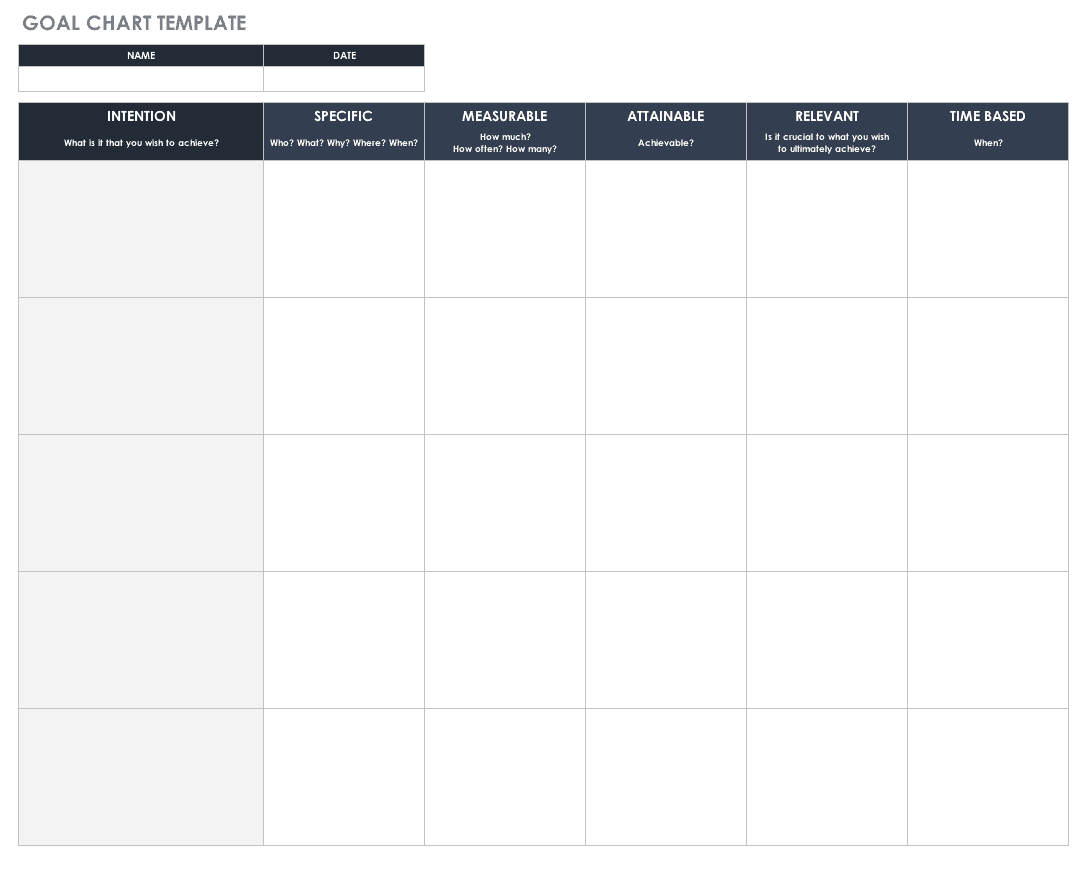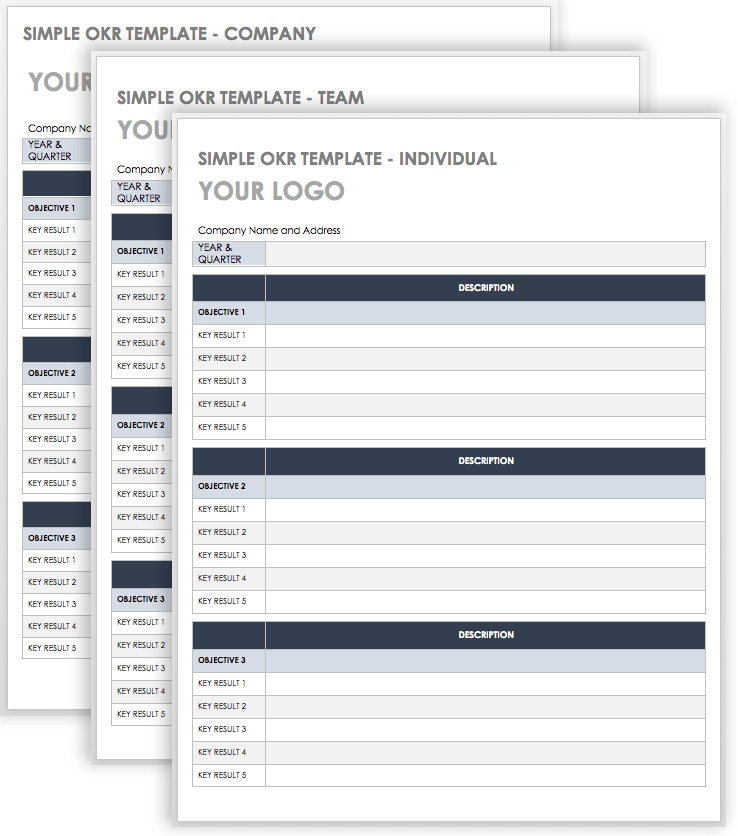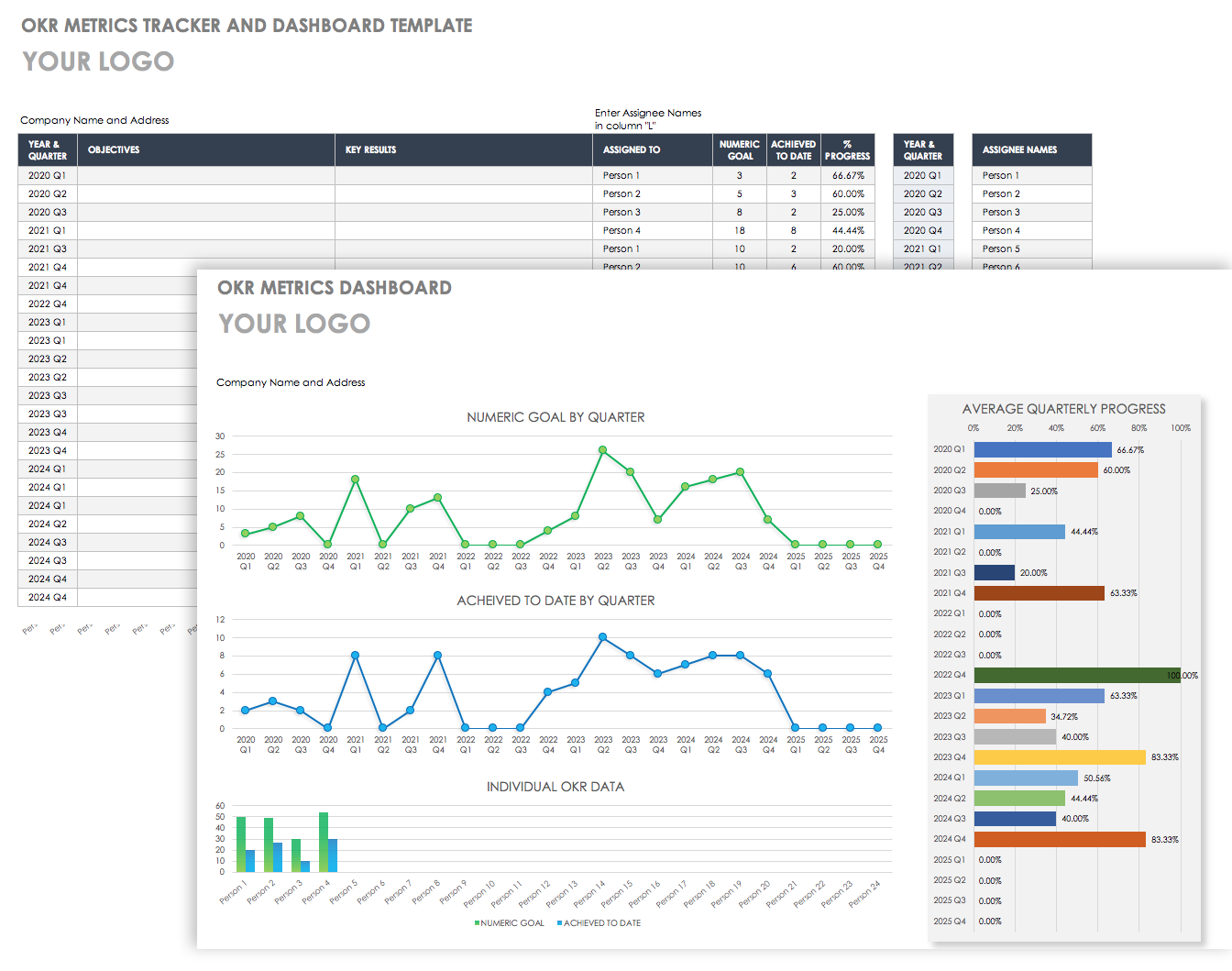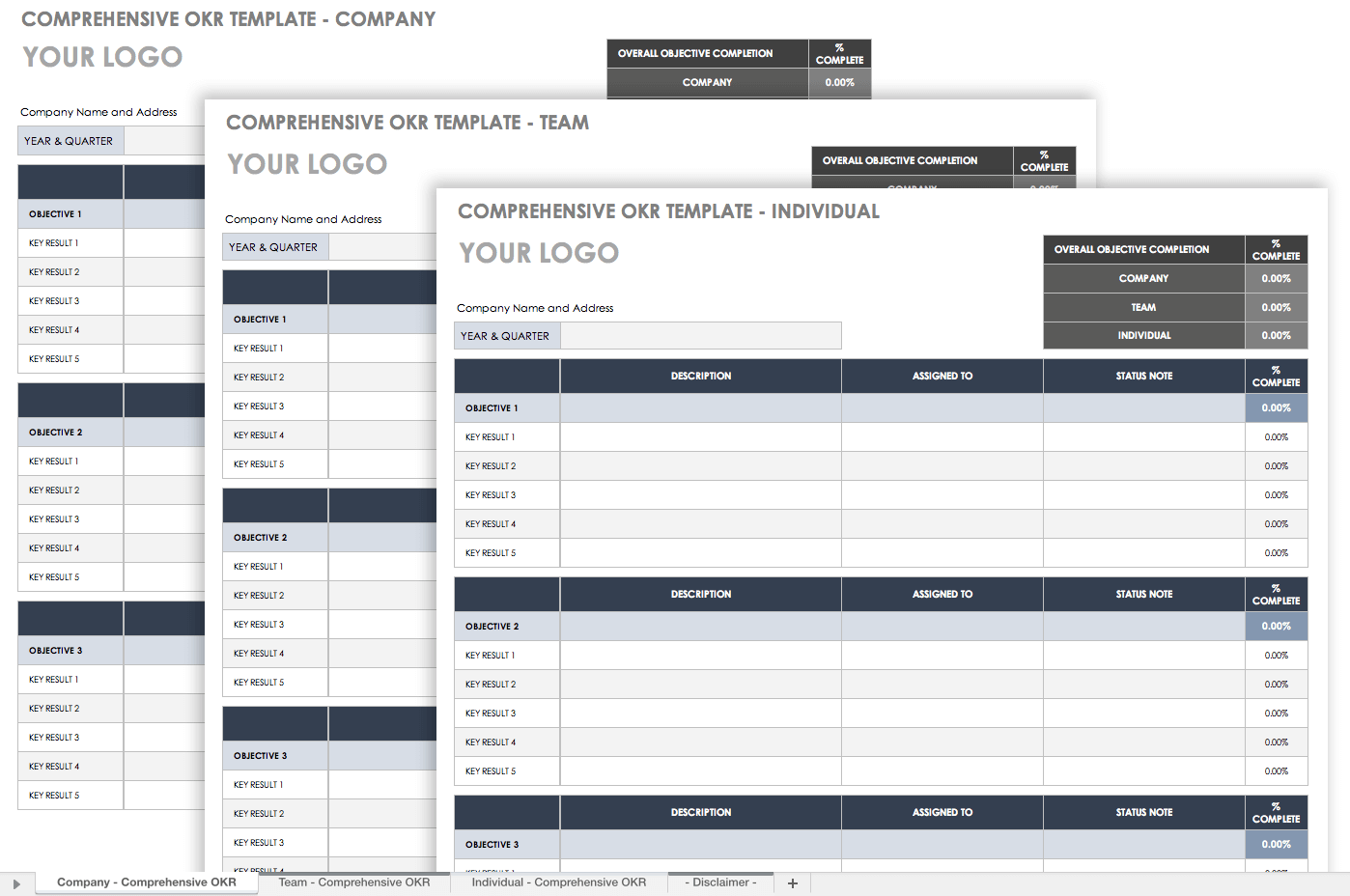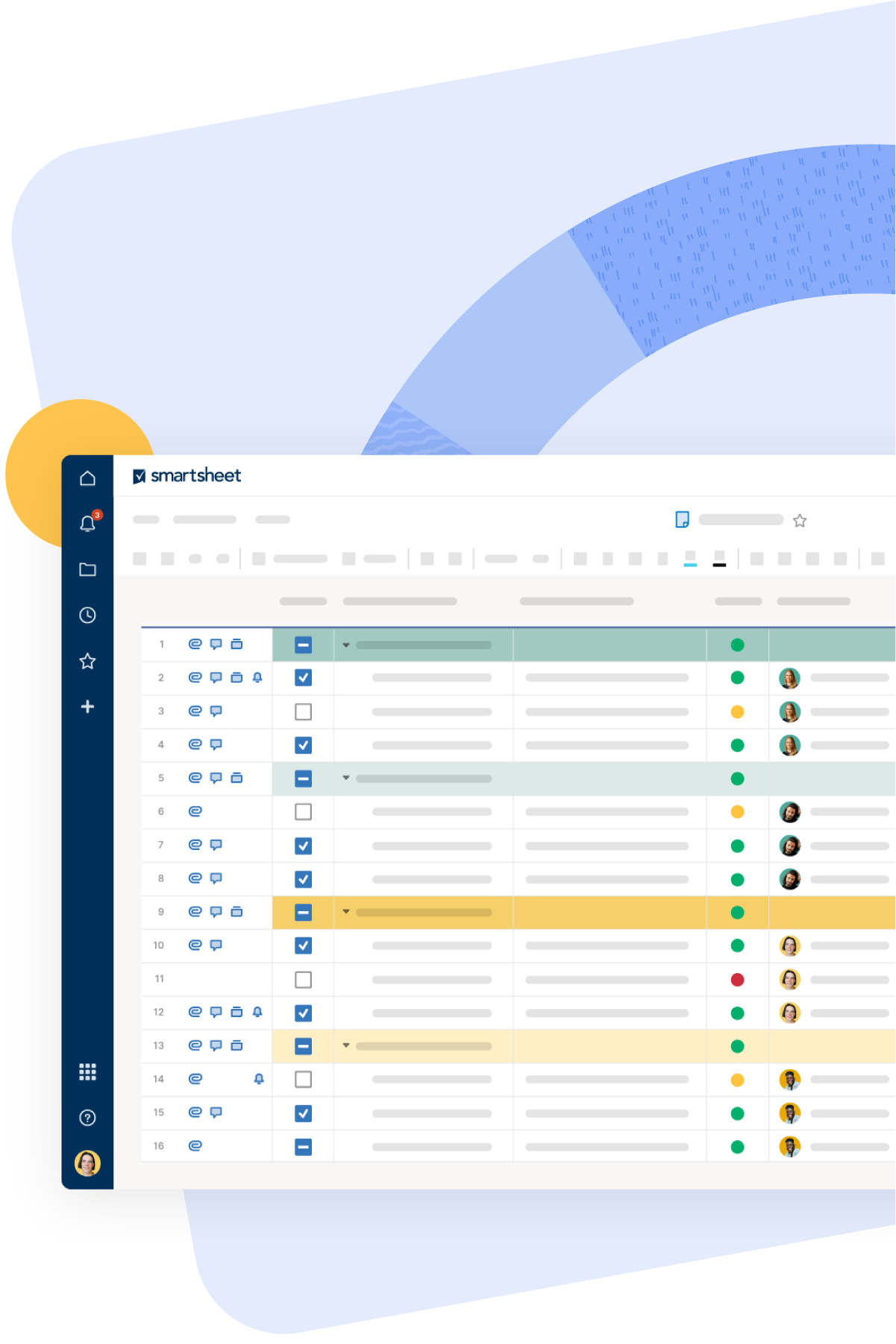OKRs vs. SMART Goals: What’s the Difference?
Objectives and key results (OKRs) and SMART goals (specific, measurable, achievable, relevant, and time-bound) are two methods of defining goals or objectives for an organization, project, or individual.
Since the 1980s, SMART goals have provided a structured framework for targeting efforts and achieving goals. But in recent years, many startups and multinational enterprises have adopted the objectives and key results (OKRs) method, which centers on bigger-picture aims. For an in-depth explanation of what OKRs can offer, read "Essential Guide to OKRs."
SMART goals are comparable to the “key results” part of OKRs, but how do these methodologies differ — and how do they work together?
"A set of OKRs in an organization should align and reinforce each other,” explains Daniel Montgomery, Managing Director of Agile Strategies. “With SMART goals, you're just talking about the structure of the goal itself.”
How SMART Goals and OKRs Are Similar
Both SMART goals and OKRs date back to Peter Drucker's theory of management by objectives (MBO). Despite some differences, both OKRs and SMART goals offer a method for creating precise goals that are realistic and time-bound. Both OKRs and SMART goals can align corporate and team goals for businesses, nonprofits, and individuals. Just as SMART goals require a specific justification for the effort, OKRs ask you to define the “why” behind your objective(s). In essence, key results are SMART goals.
See how Smartsheet can help you be more effective
Watch the demo to see how you can more effectively manage your team, projects, and processes with real-time work management in Smartsheet.
Key Differentiators for OKRs
In OKRs, the “objectives” provide general, inspirational aims, while the “key results” detail the time-based metrics by which you gauge success. OKRs are typically both less specific and more aspirational than SMART goals, and as such, they often encourage the journey toward cultural change or a breakthrough development.
Remember: “Key results” aren’t just about achieving a self-contained goal — therefore, OKRs may also more accurately indicate organization-wide success and progress. By having more generalized, agile objectives, you can change key results as necessary to take advantage of changing circumstances. Furthermore, because employees review them quarterly, OKRs provide a great way to adjust goals throughout the year as managers observe how the team works. You can find examples of OKRs by reading “Free OKR Examples for Every Department.”
In contrast, SMART goals tend to measure a single metric, such as profitability or quality. These goals focus and track discrete individual efforts, but can still move a business or an individual forward. Sometimes, management will write and cascade SMART goals throughout the organization to ensure the quality and consistency of results.
SMART goals are also frequently tied to compensation, whereas compensation is gauged separately from OKR achievement to encourage experimentation or a useful fail (wherein a team may grow capabilities but not fully achieve an aspirational goal).
Because SMART goals must be attainable, some users believe goals can devolve into a to-do list of results, rather than providing breakthrough development for an organization. Likewise, by focusing on tasks or personal growth, SMART goals can risk becoming disconnected from the strategic picture — when goals are tied to performance reviews, bonuses, or compensation, employees can fall into the trap of "sandbagging" or creating easily achieved tasks. Worse yet, people may set useless goals simply because they are achievable. Some experts also believe the emphasis on attainability constrains the "aspirational" possibilities of SMART goals. To see examples and writing tips for SMART goals, read “The Essential Guide to Writing SMART Goals.”
Organizations tend to set SMART goals annually (although some do this quarterly) and OKRs on quarterly or monthly cycles, which makes them more agile than SMART goals. Because of the extended cadence, SMART goals may be less flexible than OKRs in responding to the market or other outside factors. SMART goals may take longer to set up than OKRs because they are often more rigorously cascaded throughout the organization. As a result, individuals’ goals are dependent on those of their superiors.
Montgomery characterizes the difference between SMART goals and OKRs this way: "With SMART, there's no objective. In the OKR approach, the objective is an aspirational statement that ties into the strategy. SMART goals just stand on their own as quantitative results. I would say that SMART is a necessary but not sufficient condition. It's one piece of the puzzle, but incomplete by itself."
When to Use OKRs vs. SMART Goals
OKR and SMART methodologies have distinct uses. When choosing which method to use, consider the following qualities of your endeavor.
Use OKRs in the following situations:
- When you have a clear destination: OKRs should represent what you most want to pursue or accomplish in a quarter.
- When you are developing long-term goals: Drawing on top-level strategic objectives, groups and teams should contribute directly to setting quarterly or longer-term targets.
- When you have goals that will evolve: OKRs offer flexibility. The weekly review cadence provides a way to track success on a more minute scale. Frequently reviewing goals also helps you to monitor changes that may require you to shift or drop key results. "Most goal setting is annual, both for strategic plans, which may include a three- to five-year strategic outlook, and at the level of an individual employee," explains Montgomery, author of Start Less, Finish More: Building Strategic Agility with OKRs. "The thing is, a year can be a long time, especially in today's organizational world. What happens with OKRs is that you create a quarterly cadence of setting and reviewing goals. That way, you have a more frequent strategic conversation about what's going on in your environment."
- To create an extra level of organizational context: Well-aligned OKRs that are transparent confirm OKRs as ideal for aligning efforts throughout an organization. Doug Gray is CEO of Action Learning Associates, LLC, and author of Objectives + Key Results (OKR) Leadership: How to Apply Silicon Valley's Secret Sauce to Your Career, Team or Organization. He says, "OKRs work best for knowledge workers, such as IT or managers, who need to define their objectives, and demonstrate achievement using key results."
- To set multimetric goals: Each key result draws on a different measure of success, like an individual SMART goal. Thus, a single objective includes multiple metrics. Distinguishing between multimetric and single-metric targets may matter depending on whether you want to declare victory for the entire OKR package or specific accomplishments.
Use SMART goals in the following situations:
- To provide top-down direction for repeated behaviors and processes: "Fast food operators, for example, require top-down measures for effective performance or behaviors," says Gray.
- When you don't quite have a destination: The process of creating SMART goals provides an easy framework for creating a clear, precise goal on a timeline.
- To set and track discrete goals within a team or for an individual: Sometimes, teams or individuals have aims that are important to the team but don't contribute directly to the larger-scale strategic plan. SMART goals are an excellent structure for writing such goals. For example, a lead may want to shape behavior, such as drawing out a passive employee by assigning them the responsibility to troubleshoot problems in a frequently used program. Such a target may not be strategic, but it builds the organization's potential by empowering the employee.
Christina Wodtke is a professor, speaker, and the author of the OKR-based book Radical Focus and a new book The Team that Managed Itself. "There's no dividing line between SMART goals and OKRs," she says. "They're very similar, as long as you check in every week to ask, ‘Are we closer or farther away from our goal?’ People need to own an objective and be inspired. KPIs are just all numbers. SMART goals may be inspiring, and they have numbers. OKRs offer something for people who aren't numbers-driven."
Read our article to learn more about OKRs and KPIs.
Strengths and Weaknesses of OKRs and SMART Goals
Each approach can be useful in certain situations. These are some of the qualities to consider before choosing a method:
- Adaptability: With a typical annual cadence, SMART goals offer little opportunity to pivot. They work well with a clearly defined target in fixed circumstances. By contrast, with quarterly cadences for teams and individuals and broader objectives, OKRs permit changing key results to adjust for changes, such as in the competitor landscape.
- Alignment: Ideally, most SMART goals and OKRs are grounded in strategy and reinforced by executive buy-in.
- Aspirational Expansiveness: OKRs have a reputation for encouraging fearless exploration of new alternatives. A SMART goal may promote work toward achieving a specific purpose, after which people start to coast, thus limiting expansion and higher corporate and personal success. On the other hand, SMART goals fix focus on attainable aims.
- Morale: The narrow focus of a SMART goal may cause employees to disregard other profitable work to meet a goal. When people fail to achieve a goal, they may be demoralized because they can't see the big picture of their total accomplishments.
- Planning: Because of the specificity of SMART goals, they may take longer to create.
- Precision: SMART goals zero in on specific metrics and precise time frames, which may be desirable for clear targets in the short term. By contrast, objectives in OKRs are broad, and key results can shift as circumstances change.
Tips for Setting OKRs and SMART Goals
If you’re ready to try setting goals, consider these tips for writing product OKRs and SMART goals:
- Choose Your Goals Carefully: Poorly crafted or ill-chosen goals don't help you.
- Create Team and Individual Goals: Whether setting OKRs or SMART goals, it's always a good idea to collaborate with employees on setting team goals and to allow them to select at least some of their own goals.
- Write Down Goals: Writing down notes or goals can inspire commitment and follow-up in any undertaking. Furthermore, communicating with other team members and across the organization about goals promotes transparency and understanding.
- Plan for Success: It isn’t enough to set goals — for best results, participants must review progress frequently, such as in weekly OKR status meetings. Management, from the top level down to each lead, must also plan for success with training and other necessary resources.
- The Useful Fail: According to Christina Wodtke, "The difficult question for companies is, ‘What are we capable of?’ People fear that the new and different can cause problems with performance reviews. By contrast, OKRs ask, ‘What would you actually do if you weren't afraid? What if we went to a new market? What is success? What if we focus on a new customer?’ OKRs are about how to create a safe base to be creative."
SMART Goal and OKR Writing Templates
You can greatly simplify the process of writing SMART goals and OKRs with a template. In this section, we’ve provided the most helpful free templates for download, all of which are fully customizable to meet the needs of your situation.
To learn more about how to write personal objectives and key results (OKRs) in general, refer to our article "How to Write Effective Professional and Personal OKRs".
SMART Goals Tracking Template
Writing SMART goals isn't always easy. With this template, you can define and capture notes on your target, and then define metrics, achievability, and the time frame for meeting that target. Finally, create a precise, clear goal.
Download SMART Goals and Objectives Template
Excel | Word | PDF | Smartsheet
Project Goals and Objectives Template
If you have multiple objectives or need to plan a project, use this SMART goals template, which refers to a high-level goal with subsidiary objectives. Enter the SMART goal, and then determine the metrics and other parameters for each objective.
Download Project Goals and Objectives Template
Excel | Word | PDF | Smartsheet
Goal Chart Template
If goal-setting is a collaborative effort in your organization, download this goal chart template to list alternative versions of the same goal or compare different goals. Use one copy as a worksheet in the drafting stage, and then create another copy to record the final version of your goals.
Download Goal Chart Template
Simple OKR Template
This simple OKR template is suitable for a small business or an organization that wants an easy-to-use tool for drafting and experimenting with OKRs. Add or delete sections as needed to customize it to your needs.
Download Simple OKR Template
Excel | Word | Smartsheet
OKR Metrics Tracker and Dashboard Template
For a more sophisticated team OKR template, try this metrics tracker and accompanying dashboard. On the first sheet, set the year and quarter, and then enter team objectives and key results. Record your efforts by entering the current value and percentage of progress.
Download OKR Metrics Tracker and Dashboard Template - Excel
Comprehensive OKR Template
With this free, customizable OKR template, you can detail company, team, and individual OKRs by quarter and year. Track your progress weekly in the Status Note field, and include the percentage completed. The percentages for each key result roll up to indicate the percentage complete for each objective.
Download Comprehensive OKR Template
You’ll find more useful free, downloadable templates to help you plan OKRs and reach long-term goals, in our OKR template article.
Improve OKR and SMART Goal Planning with Real-Time Work Management in Smartsheet
Empower your people to go above and beyond with a flexible platform designed to match the needs of your team — and adapt as those needs change.
The Smartsheet platform makes it easy to plan, capture, manage, and report on work from anywhere, helping your team be more effective and get more done. Report on key metrics and get real-time visibility into work as it happens with roll-up reports, dashboards, and automated workflows built to keep your team connected and informed.
When teams have clarity into the work getting done, there’s no telling how much more they can accomplish in the same amount of time. Try Smartsheet for free, today.



